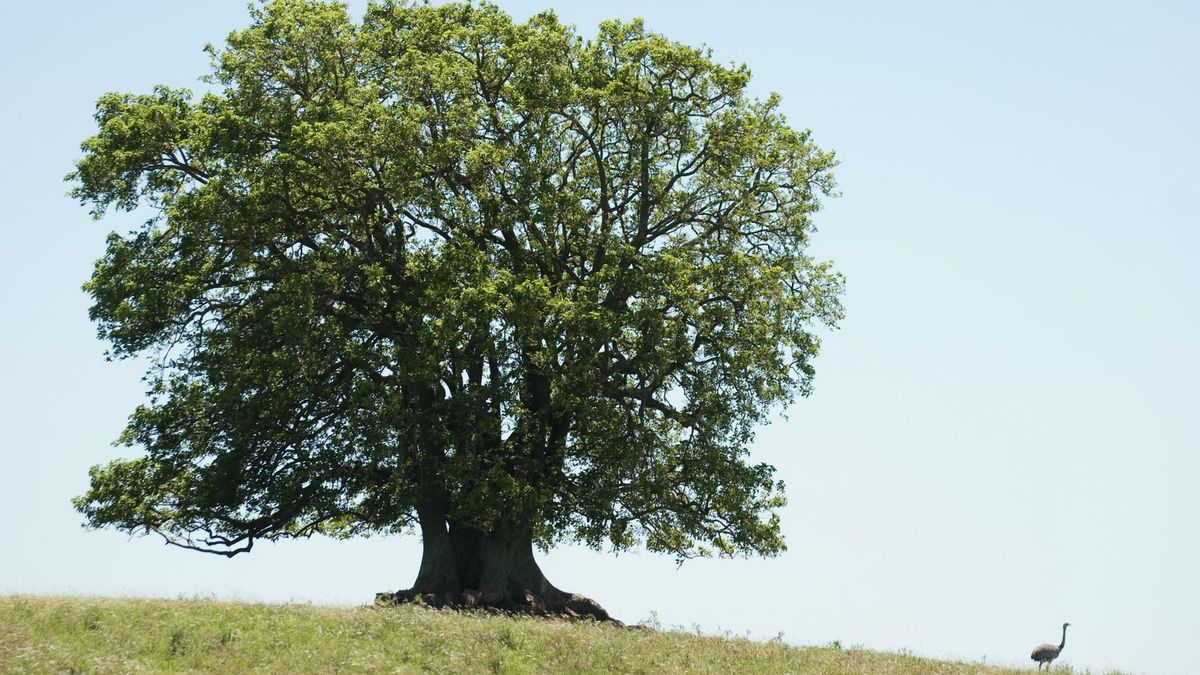The nostalgic poet Luis Domínguez gave us these verses:
-“Buenos Aires, beautiful homeland
It has a great pampas,
La Pampa … has the ombú. ”
And the journalist Gloria Martínez, writes, that the enthusiastic sensitivity of our poet, considers the ombú only Argentino. For him, Buenos Aires was synonymous with homeland, as for many others.
But the truth is that the Ombú extends its amazing presence of a plant species, throughout the Rioplatense Pampa, beyond the wide River of La Plata.
If I am allowed not very scientific appreciation, the ombú would be, something like a herb … Dinosaur, which has been admirably alive, through geological ages.
Our Guarani called him “Umbú”, with u.
In the expressive poetry of that indigenous language, its name means, in a free translation, “beautiful shadow”, with superficial roots, with very thick wide trunk, which reaches eight to ten meters high, being its very wide glass.
Its leaves are semi -stressing. The flowers are grouped into long clusters.
Originally from South America, the Ombú, as well as it has been perpetuated in nature, has a more lasting image yet, between poets and artists.
In honor of the ombú, it is not possible to forget our Guillermo Enrique Hudson, who wrote us the endearing love for his native Pampa, from his incurable London nostalgia.
Under the protective shadow of one of the twenty -five ombúes of his native payment, sitting among the strong roots with the old Gaucho friend, Hudson heard the curious stories of real events, transformed by fantasy and that were tradition into his land.
All of these would form the magnificent stories of his work: “The Ombú.”
Rafael forced, in his immortal legend of Santos Vega, writes that “that of the long fame” dies singing his love, in the shadow of the ombú, which protected the ranch of his beloved garment.
On the other shore of the wide river, a Uruguayan poet suggested by the ombu stamp, gives us the vision of its verses. Thus he sees Fernán Silva Valdés ombú when he tells us:
-“Under her shadow, the round table of the payadores was placed.”
I add that the ombú also raises its image and tends its wide shadow, about the inspiration of the playwrights.
For example, Florencio Sánchez, Uruguayan, ends the Ombú, as a symbolic character.
Regarding the masterpiece of the Uruguayan writer “La Gringa”, the journalist Gloria Martínez wrote her tribute to the ombú with this brief and beautiful poem:
Paint the heraldic shield
Of our “great pampas”
Beautiful shadow ombú
Your glass, its green knot.
You have noble, faithful and rude
And in roots you spill.
Blankets you love,
Birds or payadores
And in a cluster of flowers
You hang tenderness, in your branches.
The Ombú finally concentrates two well -defined features, that of the settler that arrives from Allende the seas to work the generous land and that of the gaucho that puts the appreciation for their freedom and feels lord of the pampas.
And the AF. end
“Everything seems miracle in nature.
But nothing is a miracle! ”
Source: Ambito
I am an author and journalist who has worked in the entertainment industry for over a decade. I currently work as a news editor at a major news website, and my focus is on covering the latest trends in entertainment. I also write occasional pieces for other outlets, and have authored two books about the entertainment industry.




